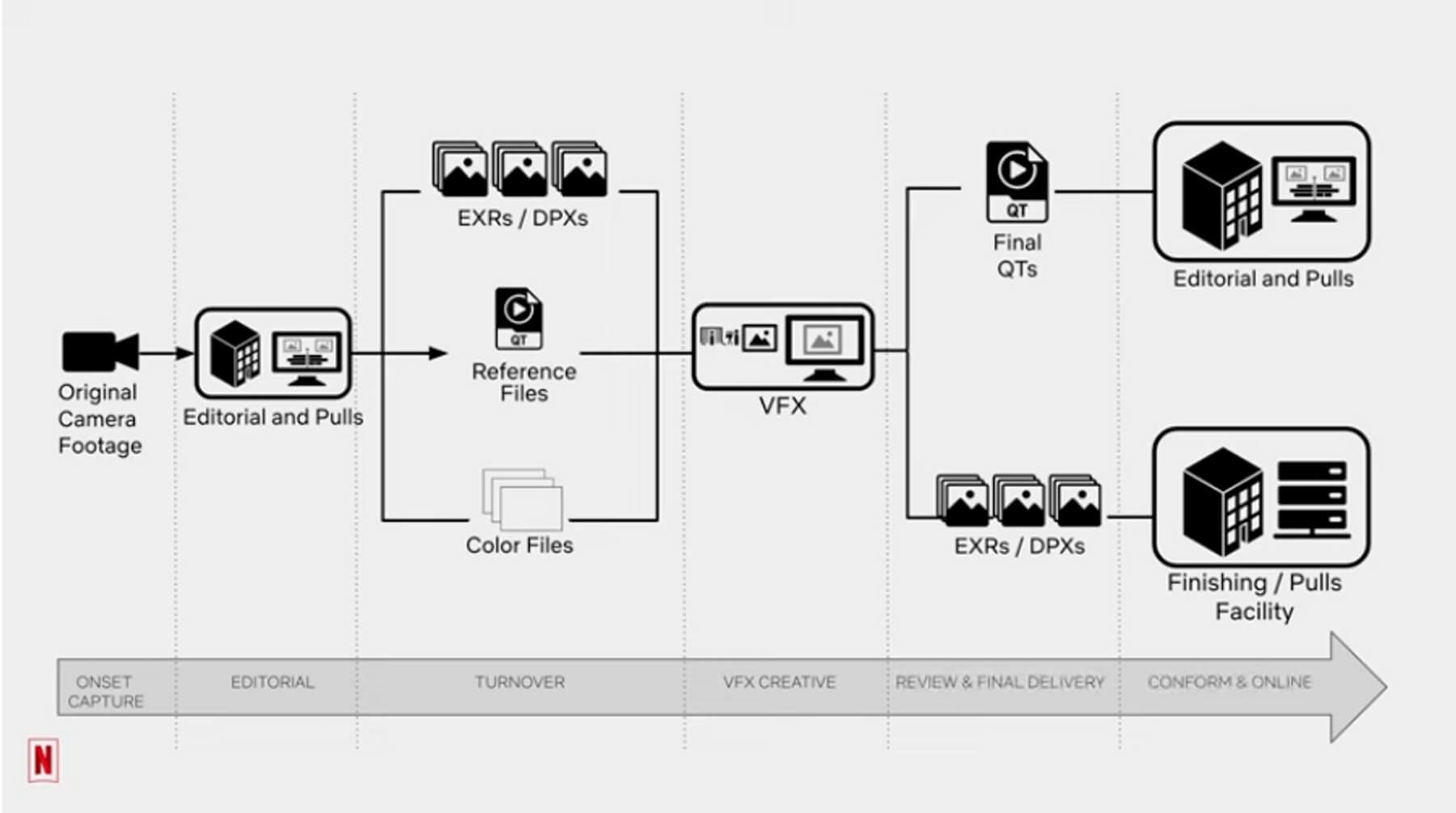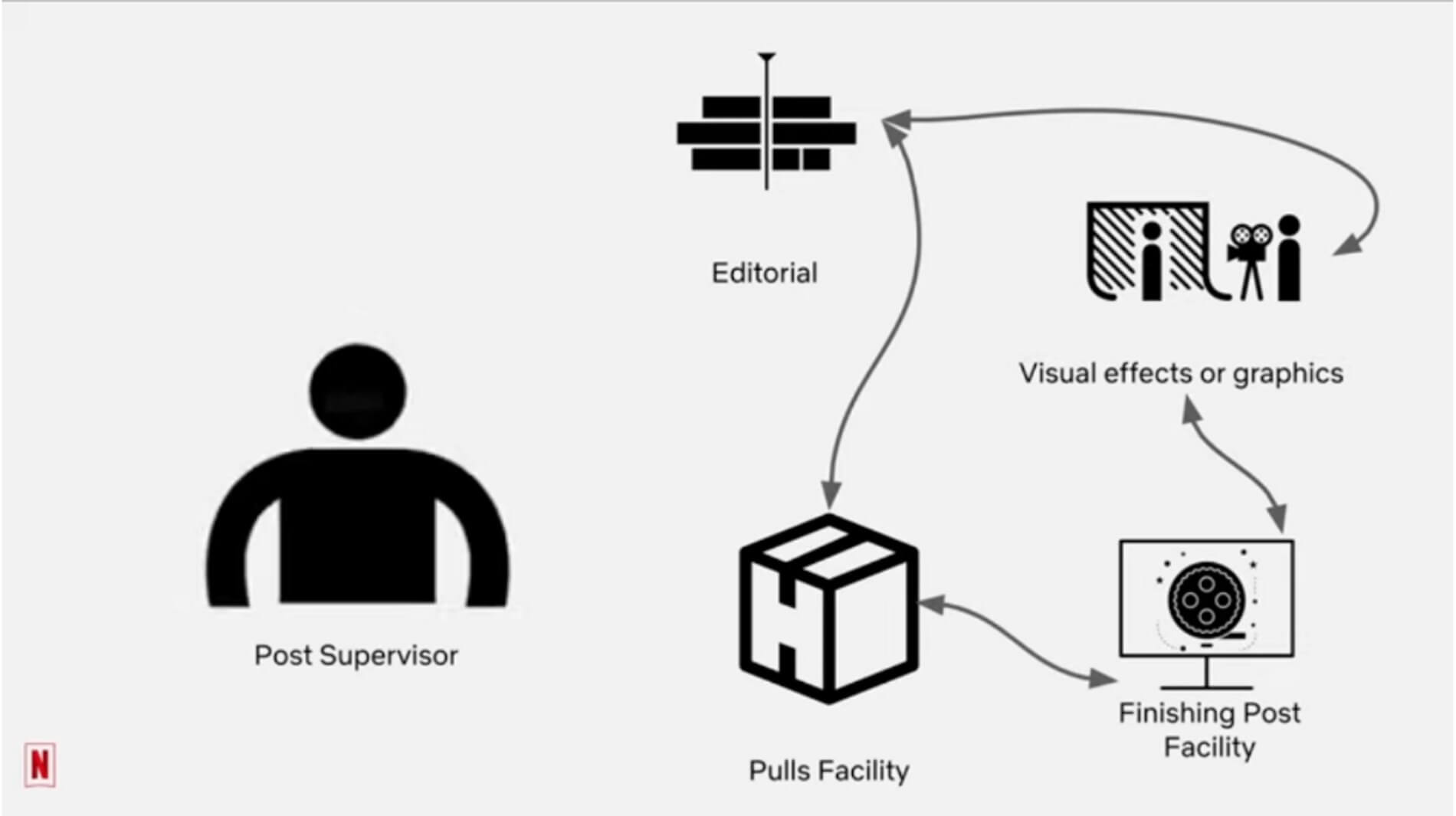As any visual effects (VFX) artist can attest to, the VFX roundtrip workflow is a back-and-forth process. A literally push and pull of assets flowing between the same core group within the VFX pipeline.
The workflow is a critical part of the post-production process, but it can be tedious and inefficient.
With a few simple configurations MASV can automate the file transfer element of the roundtrip workflow. Our platform can automate the VFX pull/push process between VFX vendors and an editorial team using a combination of Watch Folders and footage upload Portals.
This workflow requires zero engineering support. It is a no-code solution to help post professionals scale their productivity and have more time to focus on their craft.
Here’s how MASV can automate a VFX roundtrip workflow.
Table of Contents
The Best Large File Transfer for VFX Roundtripping
Automate the pull/push sequence and free up your team’s time.
How MASV Automates the VFX Roundtrip Workflow
If you are well-versed in the VFX roundtrip story, this should make sense. If you need more information on VFX roundtrips, check out the sections further down the page to learn more.
💡 Read More: How MASV Improved Image Sequence Performance by 35x
What you need for this workflow
- A MASV account. Don’t have one? Sign-up for free.
- A MASV Portal. Learn more about our upload Portals.
- Watch Folders. Learn more about our transfer automations.

Setup for source facility (VFX Pull)
This is the ‘Pull’ portion of the VFX workflow — sending files to the VFX facility from the source facility. A source facility can be a dailies lab like Shadow Magic Studios.
- Log into the MASV browser app.
- Go to Teams > add Guest. The Guest will be the Account Manager at the VFX facility.
- Create two MASV Portals:
- Portal A: The one the VFX facility will use to receive shot files.
- Portal B: The one the source facility will use to receive the finished files.
- Set the Guest as the recipient of Portal A. If necessary you can also set restrictions on what the Guest can see and download within the Portal.
- Have the account admin/owner sign into the MASV Desktop App.
- For Portal A, create a Send to Portal automation. This will upload assets from a local folder at the source facility to a Portal.
- For Portal B, create a Receive from Portal automation. This will download assets uploaded to the Portal to a local folder at the source facility.
- Add files to the Watch Folder.
Setup for VFX vendor
This is the ‘Push’ portion of the VFX workflow — sending files from the VFX vendor back to the source facility.
- The Account Manager at the VFX facility will receive an email to join the source facility’s MASV Team (from step 2 above). If they are new to MASV, they need to create an account.
- Sign into the MASV Desktop App.
- Now, create the same automations as above but with the reverse flow.
- For Portal A, create a Receive from Portal automation. This will auto-download assets uploaded by the source facility to a local folder at the VFX facility.
- For Portal B, create a Send to Portal automation. This will send finished files from a local folder at the VFX facility, which will auto-download at the source facility.
- Once VFX files are complete, add them to the Watch Folder.
Automation Complete
Once these steps are complete the automation is configured.
- The source facility will drop pull requests into a folder linked to Portal A, which will auto-download at the VFX facility.
- When the VFX facility is done, they will add the finished files to a folder linked to Portal B, which will auto-download at the source facility.
Keep in mind that all naming conventions, frame and handle counts, and proxy codecs should be based on standardizations and tech specs agreed upon in advance.
The VFX Roundtrip Workflow Explained
While producers and video editors in a typical post-production workflow can access all the project’s footage, VFX vendors only receive the shots necessary to do their jobs. Producing and delivering the files to the VFX studio, the vendor completing the VFX work, and then delivering the work back to the producers and editors is a VFX roundtrip.

The VFX roundtrip workflow includes three main stakeholders — the editorial team, the finishing/pulls team, and the VFX team — and generally consists of two main actions:
- VFX pulls: when the VFX studio requests certain shots to work on.
- VFX pushes: when the VFX studio sends completed frames back to stakeholders for review.
These pulls include:
- Master video (OpenEXR or DPX frames)
- Reference video (QuickTime)
- The timeline (via an edit decision list, or EDL)
- Color files (CDL), a framing chart, and any other notes concerning specifications or other metadata.
Although video editors usually work with compressed and low-resolution proxies, VFX roundtrips are, by necessity, very large files. That’s because VFX artists work with full-resolution frame sequences in full color space plus alpha channel.
VFX working files are typically in OpenEXR format (32-bit float RGBA) at full 4K. These and the reference QuickTime proxy video make the VFX pull a huge package to transfer to a VFX facility’s on-prem storage.
VFX files are usually kept in on-prem online storage because artists need fast access to media when compositing many layers of camera footage and integrating many layers of computer-generated imagery (CGI).

After the VFX facility completes its work, it then transfers the shots back to production — another very large file transfer — which completes the roundtrip of the files.
Netflix has a great video on the VFX Roundtrip workflow below:
- Editorial team receives a request for a VFX pull.
- Editorial team ensures the standardization of naming conventions, frame and handle count, and proxy codec based on tech specs decided in advance.
- Editorial team sends an EDL file with frame information and metadata to the finishing/pull facility; Editorial also creates reference media with the dailies color applied.
- The finishing/pull facility then pulls the requested files with the agreed naming convention, creates EXR or DPX frames and color files per clip, and passes them along with the framing chart and reference media to the VFX team.
- Files get sent to the VFX facility, VFX work is applied, and files are then returned to editorial and the finishing/pull facility.
- The VFX vendor, editorial, and finishing facility then compare the output with reference media; there should be a 1:1 match in color and framing.
- Files are then returned to editorial and finishing; the final files to the finishing facility are typically EXR or DPX files with no lookup tables (LUTs) or burn-ins, while proxies or .mov files with LUTs and burn-ins are sent to editorial.
- If the files match and are deemed satisfactory by all stakeholders, the roundtrip is complete!

Easily Transfer VFX Pulls Reliably and Quickly
Secure, reliable, and fast transfer of high-resolution EXR, DPX, and ProRes files.
Easily Transfer VFX Pulls Reliably and Quickly
MASV was designed from Day 1 to transfer insanely heavy files reliably and securely. Our per file limit is 15 TB for virtually unlimited file size packages. Combined with Portals and our Watch Folder automation means editorial, finish, and VFX teams can easily trade files between one another without breaking a sweat.
No development or IT support required to get up and running. You can create this workflow today with our Browser and Desktop app. So why wait? Sign-up today and take the first step in automating your VFX roundtrip workflow.
